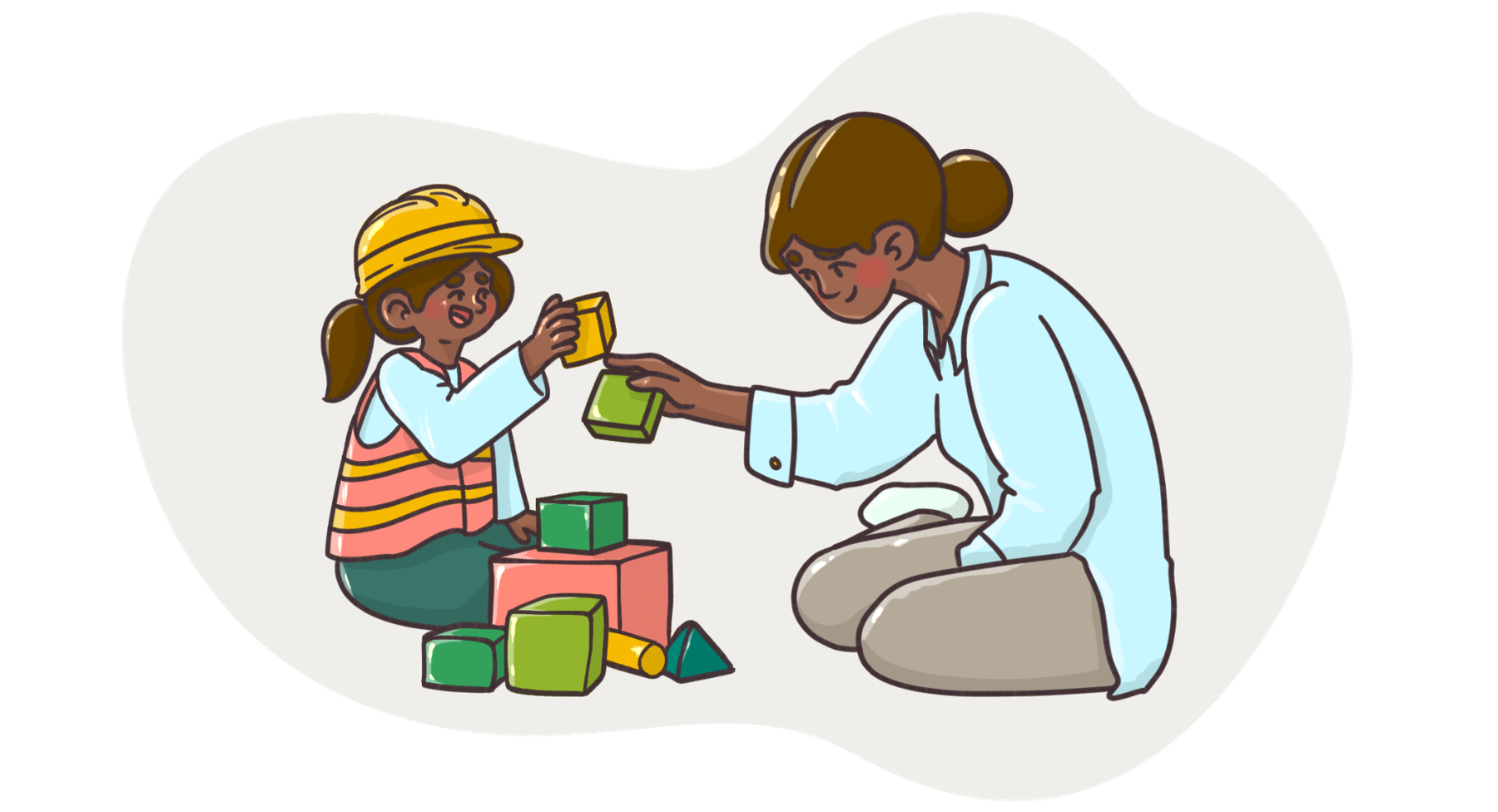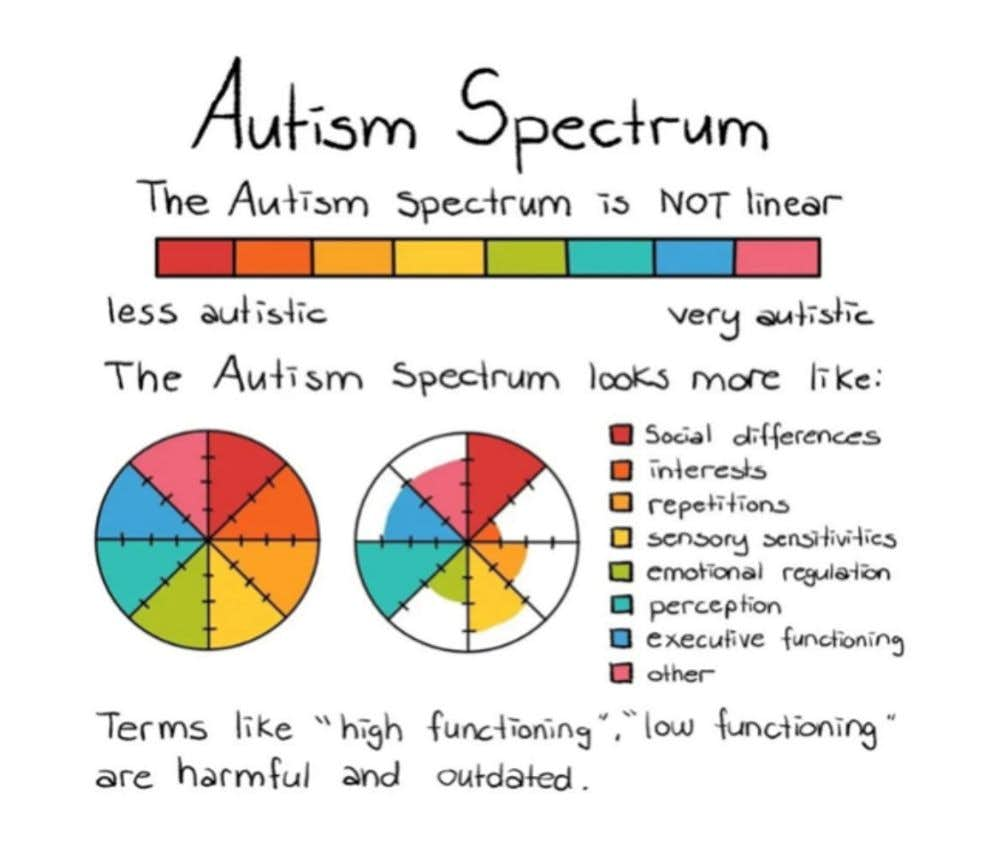Neurodevelopment disorders (or NDDs as they are often referred to) are multifaceted conditions with onset in early developmental periods characterized by impairments in cognition, communication, behavior and/or motor skills resulting from abnormal brain development. In the Diagnostic and Statistical Manual, 5th edition (DSM-5) Intellectual disabilities such as autism spectrum disorder (ASD), attention deficit hyperactivity disorder (ADHD), specific learning disabilities, schizophrenia, tic disorders, and communication disorders fall under the umbrella of NDDs. Deeper exploration and specifics of Autism Spectrum Disorder as an NDD including diagnostic criteria, resources, developmental differences, and neurodiverse understanding will be found below.
What is Autism Spectrum Disorder?
Autism Spectrum Disorder (ASD) is a complex neurodevelopment disorder that affects social interaction, communication, behavior, and sensory processing. It is called a "spectrum disorder" as it manifests differently in each and every individual in terms of its presentations and experiences. When thinking about the “spectrum” component just described, it is often helpful to think of as circular rather than a linear spectrum when understanding the different characteristics of each individual autistic person (see below).
ASD in the DSM
According to the DSM-5, the specific features and summarized Diagnostic Criteria for Autism Spectrum Disorder include:
- Impairments in social communication and social interactions across multiple contexts: This includes, but is not limited to, abnormal social approach, failure to engage in “normal” back-and-forth conversation, reduced sharing of interests, emotions, or affect, or to failure to initiate or respond to social interactions. This can also include abnormalities in eye contact and body language, lack of facial expressions and nonverbal communication, or the absence of interests in peers
- Restricted, repetitive patterns of behavior, interests, or activities: This can be described as “stereotyped” or repetitive motor movements, use of objects, or speech (echolalia), the insistence on sameness, inflexible adherence to routines, or ritualized patterns of verbal or nonverbal behavior (e.g., extreme distress at small changes, difficulties with transitions, rigid thinking patterns, greeting rituals, need to take the same route or eat the same food every day). Highly restricted, fixated interests that are “abnormal” in intensity or focus, as well as hyper- or hypo- reactivity to sensory input or unusual interest in sensory aspects of the environment (e.g. apparent indifference to pain/temperature, adverse response to specific sounds or textures, excessive smelling or touching of objects, visual fascination with lights or movement) are also common characteristics of ASD.
Symptoms must be present in the early developmental period, but may not become fully manifest until social demands exceed limited capacities, or may be masked by learned strategies in later life.
It's important to note that ASD is a lifelong condition, but early intervention and appropriate support can significantly improve an individual's quality of life and functioning. The exact cause of autism spectrum disorder is not fully understood, but it is believed to involve a combination of genetic and environmental factors. There is no known cure for ASD, but various therapies, such as behavioral therapy, speech therapy, occupational therapy, and expressive therapies (art, dance, and music) can help individuals with ASD develop their skills, better navigate their daily lives, and develop acceptance towards their disability and neurodivergence.
Autism in Boys and Girls, Women and Men Throughout the Lifespan
Autism Spectrum Disorder (ASD) is a complex condition that can manifest differently in males and females, and may evolve throughout development. Here is an overview of how autism can vary between sexes and across different developmental stages:
- Prevalence: Historically, autism has been more commonly diagnosed in males than in females. However, recent research suggests that the gender ratio may not be as skewed as previously thought. It is important to recognize that autism occurs in both males and females.
- Diagnostic Differences: Diagnostic criteria for autism were originally based on the presentation of symptoms in males, which has led to under-diagnosis in females. Females with autism may exhibit more subtle or camouflaged/ “masked” symptoms, making it more difficult to identify their condition.
- Social and Communication Skills: In general, females with autism may have better social and communication skills compared to males with autism. They might be more skilled at masking or imitating social behaviors, making it harder to recognize their challenges.
- Interests and Specializations: Autistic individuals, regardless of sex or gender, often develop intense interests or specializations in specific areas. These interests can be similar or different for males and females, depending on their individual preferences, and vary greatly.
- Sensory Sensitivities: Both males and females with autism can experience sensory sensitivities. These sensitivities can vary in intensity and specific triggers between individuals.
- Repetitive Behaviors: Repetitive behaviors, such as hand-flapping, rocking, echolalia, or other repetitive movements (or “stimming”), can be present in both males and females with autism, though the specific behaviors differ from person to person.
- Social Challenges: Social interaction difficulties are a core feature of autism, but they can manifest differently between sexes and genders. For example, males may exhibit more withdrawn or socially isolated behaviors, while females may engage in more one-on-one, scripted, or mimicry-based interactions.
- Developmental Stages: Autism is a lifelong condition, and its expression may change over time. Early intervention and support can help individuals develop coping strategies and adaptive skills. As individuals with autism progress through different developmental stages, they may face evolving challenges and strengths.
- Late Diagnosis: Females are sometimes diagnosed with autism later in life than males. This can be due to their ability to mask their symptoms and the historical under-diagnosis of females, as well as a lack of awareness and understanding about how autism may present differently in females.
- Individual Variability: It's essential to remember that autism is highly variable. Each individual, regardless of gender, has a unique profile of strengths and challenges. Understanding and supporting the individual's specific needs is crucial.
While there are some general trends and differences in how autism may present in males and females, it's important to recognize the immense variability within the autism spectrum. Early diagnosis, individualized support, and an understanding of the unique strengths and challenges of each person with autism are essential for their well-being and development, regardless of their gender.
Understanding Autism Spectrum Disorder and Neurodivergence
The term “neurodivergent” refers to individuals whose brain differences affect how they operate. In other words, they have different strengths and challenges from those whose brains do not have said differences. This umbrella of neurodivergence includes ADHD, OCD, dyslexia, dyscalculia, schizophrenia, tic disorders, speech and language disorders, intellectual disabilities, and autism spectrum disorder. Understanding Autism Spectrum Disorder as a form of neurodivergence helps promote acceptance, inclusion, and the celebration of the unique strengths and perspectives that neurodivergent individuals bring to society.
It's important to remember that every autistic individual is unique, and their experiences and needs may differ significantly. Therefore, it is crucial to approach each person with respect, non-judgement, and an open mind. By understanding autism and neurodivergence and adopting a more inclusive and empathetic perspective, we can create a more accepting and accommodating society that values the unique contributions of autistic individuals.
Living with Autism: How to Survive and Thrive in a Neurotypical World
Living with autism can present unique challenges when navigating a world that is predominantly neurotypical, or designed for individuals who do not have autism or other neurodivergent conditions. Here are some strategies and considerations for autistic individuals and the people in their lives as they navigate the neurotypical world:
- Self-Awareness: Understanding one's own strengths, challenges, and sensory sensitivities is essential. It allows individuals with autism to communicate their needs and preferences effectively.
- Advocacy: Self-advocacy is a crucial skill. Help teach and model to autistic individuals how to express their needs and preferences to friends, family, teachers, and employers.
- Supportive environments: Create spaces that accommodate sensory sensitivities! Reducing Sensory Overload by adjusting lighting, noise levels, or providing sensory-friendly materials can make a significant difference.
- Education and Awareness: Raise awareness about autism in your community, workplace, and educational institutions. Increased awareness can lead to better understanding and support.
- Effective Communication: Use clear and concise language when communicating with autistic individuals. Visual aids, social stories, and other communication tools can be helpful.
- Education Options: Explore educational settings that meet the unique learning needs of autistic individuals, whether it's mainstream schooling with accommodations, special education programs, or homeschooling.
- Employment Support: Seek out employers and workplaces that are inclusive and provide reasonable accommodations. Work on developing job skills and routines.
- Community Support: Join autism support groups or communities where individuals and families can share experiences, advice, and resources.
- Sensory Management: Identify sensory triggers and develop strategies to manage sensory sensitivities. Sensory tools like noise-canceling headphones, weighted blankets, or fidget toys can be helpful.
- Transition Planning: Plan for transitions, such as moving from school to work or from one living situation to another. This can involve vocational training and independent living skills.
- Family Support: Families play a vital role in supporting individuals with autism. Learn about autism, access resources, and engage in open communication.
- Acceptance: Promote self-acceptance and acceptance of autism as part of one's identity. Understanding that being neurodivergent is a valid and valuable way of being is empowering.
Remember that autism is a spectrum, and what works for one person may not work for another. Tailor your approach to the specific needs and preferences of the individual. By creating a supportive, understanding, and accommodating environment, autistic individuals can lead fulfilling lives and thrive in the neurotypical world.
Helpful Resources and What Resources to Avoid
Whether you are a parent, partner, sibling, friend, or loved one to an autistic person, it is helpful to know what resources are out there to provide accurate assistance and care for them. Positive resources for autistic individuals include:
Websites
Books
- Different, Not Less: A Neurodivergent's Guide to Embracing Your True Self and Finding Your Happily Ever After By Chloe Hayden
- Unmasking Autism by Devon Price
- Living With Autism in a Neurotypical World by Teresa Mary Banner
- Understanding Autism (ebook)
Social Media
What To Avoid


